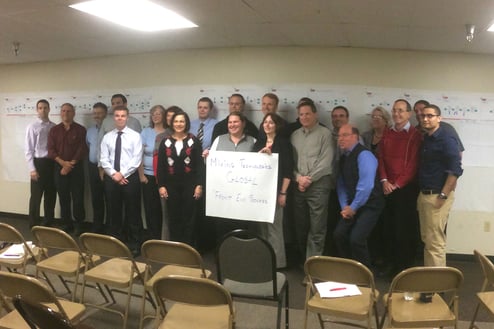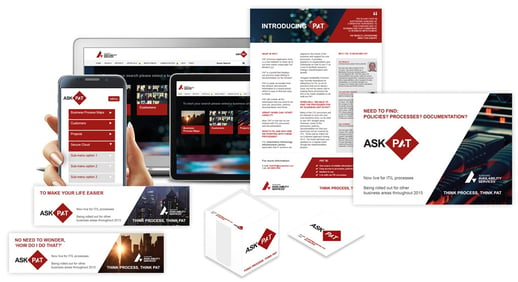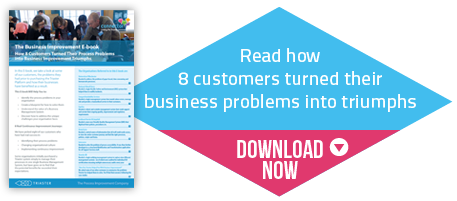One of the biggest problems with continuous improvement when implementing a Business Management System is achieving employee buy in, i.e. for the employees to follow the agreed processes. At Triaster, we work with many different organisations from many different sectors, but getting their employees to use their Business Process Management system and follow the correct process is always a challenge.
The Problem: Too Much Focus on the System
One of the common problems with continuous improvement is that the team implementing a BPM focus rely entirely on the implementation of the system, whilst not giving enough focus to keeping the rest of the organisation in the loop. This can be because they don’t have the time or the skillset to address this. It can even be because they don’t realise it is required.
This, however, is a grave mistake: all team members have to know about what they are doing and why.
Equally as important as the system is the cultural shift that needs to go alongside its implementation.

The Solution: Cultural Change for Continuous Improvement
After Triaster customer Bidfood (at that time still called Bidvest Foodservices) implemented a BPM system in 2011, the Business Improvement Manager, Julie Mack spoke about there being two distinct aspects to the implementation: Technical Change and Cultural Change, with the cultural change requiring by far the most effort.
Julie Mack summarised the cultural change needed at Bidfood as moving from a culture in which staff are used to being sent information, to one in which they independently find the information they need.
At Bidfood, Julie went for a phased implementation of the Triaster BPM system , which enabled her team to coach staff on how to use it in very small groups or one-to one.
This was required as most of the employees were doing manual work and weren’t computer comfortable. They needed their confidence building both personally and in the system. Once it was, they were comfortable to follow the processes.
For another Triaster customer, National Oilwell Varco, the cultural change required when the Triaster BPM system was introduced, was for an understanding of process management to be embedded across the group. It was important that employees gained an understanding of the benefits of taking a process approach and got a good grasp of the impact of change.
Vital Ingredient #1: Employee Buy-in
National Oilwell Varco involves as many employees as possible in process improvement workshops to capture their processes and this has opened their employees’ eyes as to what BPM can achieve.
With their involvement in the development of the business process improvement, employees feel ownership for the processes and therefore getting them to follow them is not an issue.

The earlier employees are informed about a new BPM approach, system, or a new process focused way of working, the better. The more that they can be involved with its implementation, the more they will feel ownership of it and the more likely they will be to follow the processes.
Vital Ingredient #2: Senior Management Commitment
Senior management commitment to BPM and following the process is absolutely essential.
There are a number of reasons for this:
- Without this it is very hard to build the reputation of your BPM system. If senior management aren’t supporting and using it, why should everyone else?
- It is key that employees can see the link between taking a process approach with the strategic goals of the organisation. This is very hard to achieve without senior management support.
- Senior management participation generally enables decisions to be made quickly and benefits to be realised promptly.
Vital Ingredient #3: Keep the Communication Going
It just isn’t enough to send out an e-mail and say 'we have a new BPM system in place and from now on you need to follow the processes it contains'.
There has to be an on-going programme of communication, starting before the BPM system is even chosen. The communication methods used need to be varied and on-going.
- E-mails
- Flyers
- Poster (electronic and print)
- Banners
- Presentations
- Workshops and events
- Launch events
- Give aways
- Posts on the intranet and internal social media
- Updates in the newsletter

These will be most effective if they are immediately identifiable with the BPM system. Triaster advise giving the system a name and building a recognisable brand for it. Bidfood’s BPM system is called ‘Find me’. National Oilwell Varco’s system is called ‘Pathway’, Sungard Availabilities award winning system is called ‘Ask PAT’.
In order to get more information about how to improve your own business' processes, please feel free to download Triaster's  or simply click below:
or simply click below:
Size of the Continual Improvement Challenge
How big a challenge achieving cultural change is, obviously depends on where the organisation is starting from. If BPM is unknown in an organisation there needs to be quite a bit of focus given to explaining why it is being implemented, how it will benefit both the organisation and the individual employees and the importance of everyone following the agreed process from now on.
If the industry is already quite process driven – such as engineering - there will be less to do than for one where business processes are a new concept – such as Health or Education. However some focus is required, whatever the industry and whatever the organisation.
This is not something that happens overnight, it takes time and communication and on-going commitment from senior management, but it will happen.
Implementing Business Process Management will not only help your business foster employee buy in, but can also generate astonishing ROI benefits. Below you can find an excellent example of how one of Triaster's customers managed to save £350k per annum:
Related articles:
BPM 2018: Top 10 BPM Industry Trends This Year
Appian vs Pega vs Bizagi: Which Is The Best BPM Software?
Best Business Process Management Software Providers: A brief review
Written by Emma Harris
Emma was Operations Director for Triaster for nearly 20 years, during which time as well as learning and perfecting her BPM and process improvement skills, she honed her inbound marketing expertise. She now runs D2e - Designed to engage - which designs and develops bespoke, engaging, HubSpot CMS websites, that help your entire company to grow and scale. She is delighted to still be delivering Triaster's marketing, whilst also helping other companies turn their websites into their hardest working asset.



